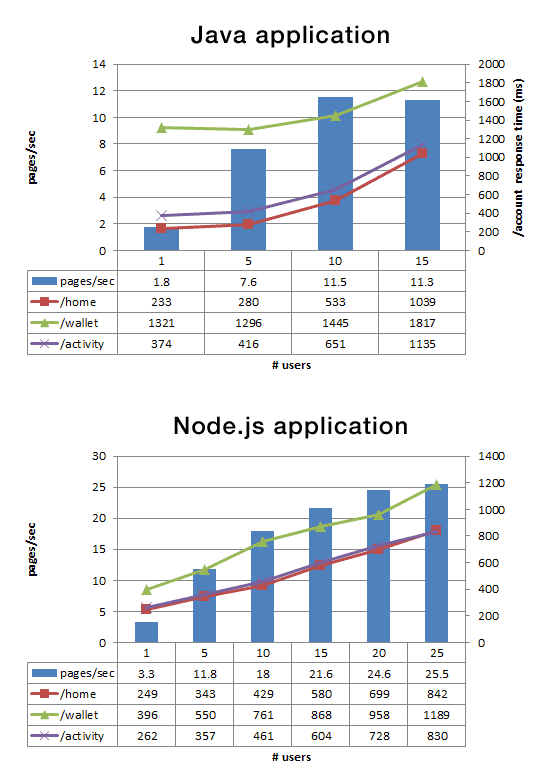"Running the test suite on production hardware, they concluded that the Node.js app was performing better than the Java one, serving:Double the requests per second vs. the Java application. This is even more interesting because our initial performance results were using a single core for the node.js application compared to five cores in Java. "
The node.js app was:
- Built almost twice as fast with fewer people
- Written in 33% fewer lines of code
- Constructed with 40% fewer files

...node.js application had:
- Double the requests per second vs. the Java application. This is even more interesting because our initial performance results were using a single core for the node.js application compared to five cores in Java. We expect to increase this divide further.
- 35% decrease in the average response time for the same page. This resulted in the pages being served 200ms faster— something users will definitely notice.